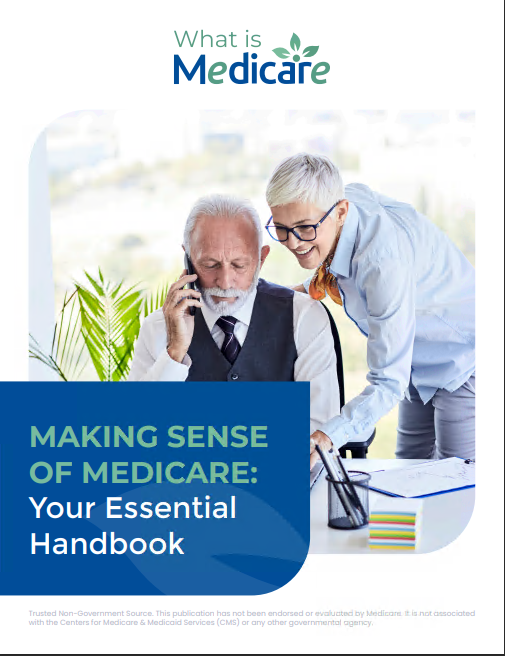Key Takeaways
- Medicare provides health coverage primarily for people aged 65 and older, as well as some younger individuals with specific disabilities.
- Medicaid offers health coverage to individuals of any age with low income and limited resources.
Medicare and Medicaid Seem Similar? Here’s How to Tell the Difference
Navigating the world of health insurance can be daunting, especially when faced with similar-sounding programs like Medicare and Medicaid. While these two government programs both aim to help people access healthcare, they cater to different groups and offer distinct types of coverage. Let’s explore the key differences to help you better understand which program might be right for you or your loved ones.
Medicare vs. Medicaid: What’s the Scoop?
Medicare and Medicaid are both crucial programs, but they serve different purposes and populations. Medicare is a federal health insurance program primarily for people aged 65 and older, though it also covers some younger individuals with certain disabilities. Medicaid, on the other hand, is a joint federal and state program that assists low-income individuals of all ages with healthcare costs.
Medicare is often referred to as an “entitlement” program because most people earn the right to enroll by working and paying taxes for a minimum required period. Conversely, Medicaid is a “means-tested” program that is jointly funded by federal and state governments, providing health coverage based on income and other resources.
Who Qualifies for What? Breaking It Down
Eligibility for these programs varies significantly. Medicare eligibility is generally straightforward: it primarily covers those aged 65 and older, as well as younger people with disabilities or specific conditions like End-Stage Renal Disease (ESRD). In contrast, Medicaid eligibility is based on income and resource limits, which can vary from state to state. It serves low-income families, children, pregnant women, the elderly, and individuals with disabilities.
For Medicare, almost everyone who is 65 or older qualifies for premium-free Part A if they or their spouse paid Medicare taxes while working. Part B, which covers medical insurance, requires a monthly premium. Younger people can qualify for Medicare if they have been receiving Social Security Disability Insurance (SSDI) for 24 months, or have certain conditions such as ALS or ESRD.
Medicaid eligibility, on the other hand, is more variable. It is designed for low-income individuals, including families with children, pregnant women, elderly adults, and people with disabilities. Each state sets its own guidelines regarding eligibility and services, and these can be quite different. Generally, applicants must meet certain income and asset criteria to qualify.
Coverage: What Do These Programs Pay For?
Both Medicare and Medicaid cover a range of medical services, but the specifics differ. Medicare includes hospital insurance (Part A), medical insurance (Part B), Medicare Advantage Plans (Part C), and prescription drug coverage (Part D). Part A covers inpatient hospital stays, skilled nursing facility care, hospice care, and some home health care. Part B covers outpatient care, preventive services, ambulance services, and durable medical equipment.
Medicaid covers similar services but also includes long-term care, which Medicare typically does not cover. This includes services like nursing home care and personal care services. Medicaid can cover more comprehensive services depending on the state, such as dental care, vision, and hearing aids. Additionally, Medicaid often covers services that Medicare does not, such as personal care services and long-term care both at home and in nursing facilities.
Costs Explained: Out-of-Pocket Differences
One of the major differences between Medicare and Medicaid is how costs are handled. Medicare beneficiaries share the cost of healthcare through premiums, deductibles, and coinsurance. For instance, while Part A is typically premium-free, it does have a deductible and coinsurance. Part B has a monthly premium, an annual deductible, and coinsurance where beneficiaries pay 20% of the Medicare-approved amount for most doctor services.
Medicaid, however, is designed to be more affordable for low-income individuals, often with no premiums and minimal copayments. Medicaid enrollees may have to pay a small copayment for some medical services, but these costs are generally much lower than those for Medicare. The extent of cost-sharing depends on the state and the income level of the enrollee. In some cases, states may require nominal premiums or copayments for Medicaid services, but these are usually minimal to ensure that the program remains accessible to those who need it most.
Enrollment Steps: Getting Started with Medicare and Medicaid
Enrolling in Medicare usually begins around your 65th birthday during the Initial Enrollment Period. This period spans seven months, beginning three months before the month you turn 65, including your birth month, and ending three months after your birth month. If you miss this window, you can enroll during the General Enrollment Period from January 1 to March 31 each year, but late enrollment penalties may apply. There’s also the Open Enrollment Period from October 15 to December 7, which allows you to make changes to your Medicare Advantage and Part D plans.
For Medicaid, you can apply at any time. There is no specific enrollment period, which makes it more flexible. Applications can be submitted through your state’s Medicaid office, online via the Health Insurance Marketplace, or through other state-specific portals. The process typically involves providing proof of income, residency, and other personal information to determine eligibility.
Dual Eligibility: Can You Have Both?
Yes, some individuals qualify for both Medicare and Medicaid, known as “dual eligibility.” This can help cover costs not fully paid by Medicare, such as long-term care services. Dual-eligible individuals receive benefits from both programs, enhancing their coverage and reducing out-of-pocket expenses.
Dual eligibility can significantly ease the financial burden of medical costs. Medicare becomes the primary payer, and Medicaid acts as the secondary payer, covering costs like Medicare premiums, deductibles, and coinsurance. Additionally, Medicaid may offer benefits not covered by Medicare, such as long-term care services, further extending the healthcare coverage for dual-eligible individuals.
Common Misconceptions Cleared Up
A common misconception is that Medicare and Medicaid are interchangeable. They are not. Medicare is primarily age-based, while Medicaid is income-based. Additionally, Medicare is consistent nationwide, but Medicaid benefits and eligibility can vary significantly by state.
Another misunderstanding is about coverage overlaps. While both programs cover essential health services, they serve different purposes and populations. Medicare is not free healthcare; it involves cost-sharing through premiums and out-of-pocket costs, while Medicaid aims to provide minimal-cost or free healthcare to low-income individuals. It’s also crucial to know that having one does not automatically qualify you for the other, except in cases of dual eligibility.
Finding More Help and Resources
For more detailed information and personalized assistance, it’s advisable to visit official websites like Medicare.gov and Medicaid.gov or contact licensed insurance agents who can provide guidance based on your specific situation.
Licensed insurance agents can help clarify the nuances of each program and guide you through the application process, ensuring you receive the benefits for which you are eligible. These professionals can also assist in understanding changes in state-specific Medicaid programs and how they interact with federal Medicare benefits.
Need More Information?
Understanding the intricacies of Medicare and Medicaid can be challenging. However, grasping the fundamental differences helps in making informed decisions about healthcare coverage. For additional resources and assistance, visit the official Medicare and Medicaid websites or reach out to licensed insurance professionals.
Contact Information:
Email: [email protected]
Phone: 2675558901










